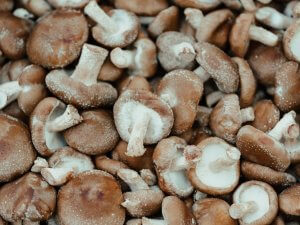What is the best substitute for Shitake Mushrooms?
Are you looking for a shiitake mushroom substitute? If you’re looking for substitutes for shiitake mushrooms, there are several options available, each with its own unique flavor and texture. Try using Portobello Mushrooms, Oyster Mushrooms, Button Mushrooms, Maitake Mushrooms, Chantrelle Mushroms, Porcini Mushrooms (Dried), Enoki Mushrooms or Cremini Mushrooms.
Let’s learn a bit more about each of these.
What are Shiitake Mushrooms?
Shiitake mushrooms are a type of edible mushroom that is native to East Asia, particularly Japan, China, and Korea. They have been grown for centuries and are known for their both their culinary and medicinal properties. Shiitake mushrooms have a distinctive flavor that is often described as rich, earthy, and slightly smoky.
These mushrooms are known for their unique appearance. They typically have a brown cap with a slightly convex shape and a white stem. The cap can range in size from small to large, and it often has a slightly curled edge.
Shiitake mushrooms have gained popularity around the world over the last number of years. This is due to their versatility and potential health benefits. They are commonly used in various cuisines and dishes, including soups, stir-fries, pasta, risottos, and more. In addition to their culinary uses, shiitakes are also believed to have potential health benefits, such as supporting the immune system and providing nutrients like B vitamins, minerals, and dietary fiber.
You can buy Shiitake mushrooms in fresh, dried, and even powdered forms. Dried shiitakes have a concentrated flavor and are often rehydrated before use in cooking. The stems of shiitake mushrooms can be tougher and more fibrous, so they are sometimes removed before cooking.
Overall, shiitake mushrooms are cherished for their flavor, texture, and potential health-enhancing properties, making them a popular ingredient in a wide range of dishes worldwide.
Okay, before we look at your shiitake mushroom substitute options, let’s deal with that empty cupboard situation!
Where can I buy Shiitake Mushrooms?
If you want to be more prepared and ensure you don’t run out of shiitake mushrooms then you should stock up now.
Nowadays most delicatessens and general supermarkets stock a wide variety of shiitake mushrooms. Or if you prefer you can also purchase shiitake mushrooms on-line.
So why not jump on and place your order today.
STOCK UP NOW!
100% dried Shiitake Mushrooms. No additivies.
Simply reydrate in warm water before use. High in protein, low in fat, and comes with a delicious umami flavor.
Good shelf-life.
What can I substitute for Shiitake Mushrooms?
Here are some of the best ingredients to substitute the flavor and role that shiitake mushrooms provide in your recipes.
- Portobello Mushrooms
- Oyster Mushrooms
- Button Mushrooms
- Maitake Mushrooms
- Chantrelle Mushroms
- Porcini Mushrooms (Dried)
- Enoki Mushrooms
- Cremini Mushrooms
Shiitake Mushroom substitutes
Portobello Mushrooms
Portobello mushrooms can be a suitable substitute for shiitake mushrooms in many recipes, but there are a few differences in flavor and texture that you should consider when making the substitution:
Flavor: Shiitake mushrooms have a distinct, earthy flavor with a hint of smokiness. Portobello mushrooms also have an earthy flavor, but it tends to be more pronounced and slightly meaty. Because of the stronger taste they may not be suitable in recipes that require a milder mushroom flavor.
Texture: Portobello mushrooms have a meaty, dense texture, which can be similar to shiitake mushrooms. They are often used as a meat substitute due to their hearty texture. Portobellos also have a more substantial cap and stem compared to shiitakes. The stems can be quite dense, so make sure to cook them adequately to achieve the desired tenderness.
Cooking: Both shiitake and portobello mushrooms can be sautéed, grilled, roasted, or used in various dishes. Portobellos are often grilled or stuffed due to their size and texture. If you’re using portobellos in a recipe that calls for shiitakes, you might want to adjust the cooking time slightly, as portobellos can take a little longer to cook through.
Overall, portobello mushrooms can work well as a shiitake mushroom substitute, especially in dishes where the meaty texture and earthy flavor will complement the overall flavor profile. Just keep in mind the slight differences in taste and texture, and adjust your cooking methods accordingly.
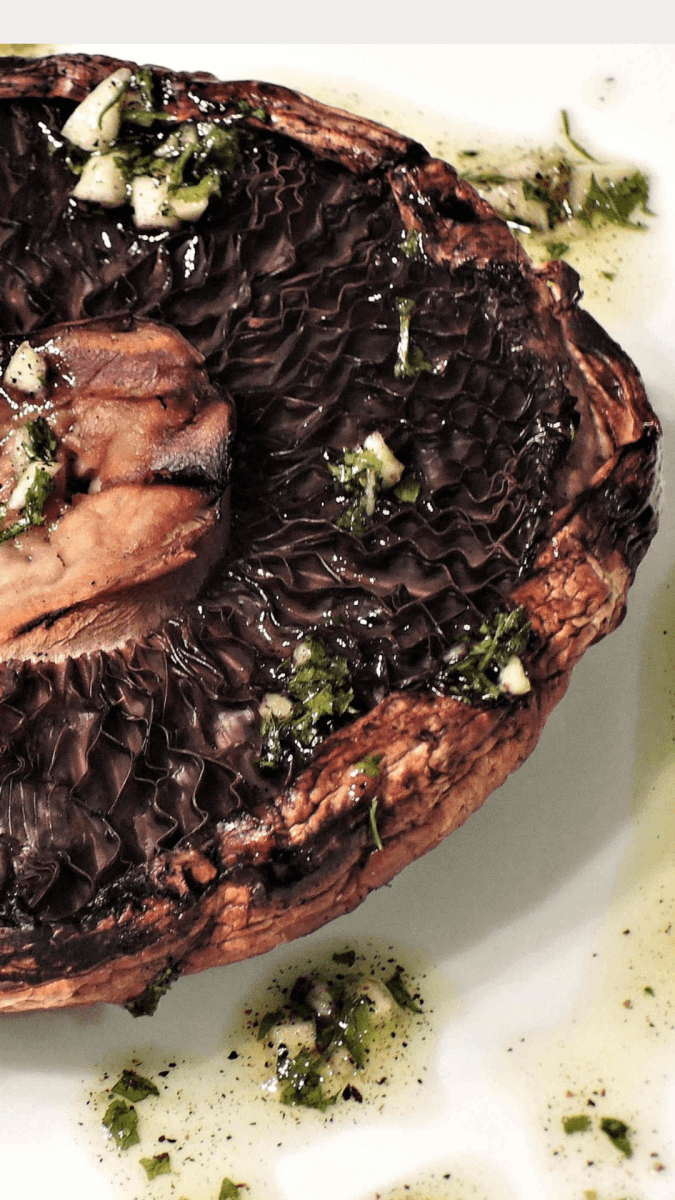
Oyster Mushrooms
Oyster mushrooms can be a good substitute for shiitake mushrooms in many recipes, but there are a few differences in flavor and texture that you should be aware of:
Flavor: Oyster mushrooms have a delicate and slightly sweet flavor with a hint of anise or licorice-like notes. Shiitake mushrooms on the otherhand have a more pronounced and earthy flavor with a touch of smokiness. If your recipe relies on the specific umami and smoky notes of shiitake mushrooms, oyster mushrooms might not provide the exact same flavor profile.
Texture: Oyster mushrooms have a tender and delicate texture that can be slightly chewy when cooked. They have thin stems and caps that are often fan-shaped, resembling oyster shells. Remember that shiitake mushrooms have a more substantial and meaty texture, which can provide a satisfying chew in dishes.
Cooking: Oyster mushrooms cook relatively quickly and can become tender with minimal cooking time. Be careful not to overcook them, as they can become mushy. Oyster mushrooms work well in stir-fries, soups, pasta dishes, and even salads. However, due to their delicate nature, they might not hold up as well in dishes that require longer cooking times or intense flavors.
When substituting oyster mushrooms for shiitake mushrooms, consider the overall flavor and texture profile of your dish. Oyster mushrooms can provide a lighter, sweeter taste and a delicate texture that might work well in certain recipes. However, if the smoky, meaty, or umami characteristics of shiitakes are essential to the dish, you might want to combine oyster mushrooms with other mushrooms or consider other substitute options.
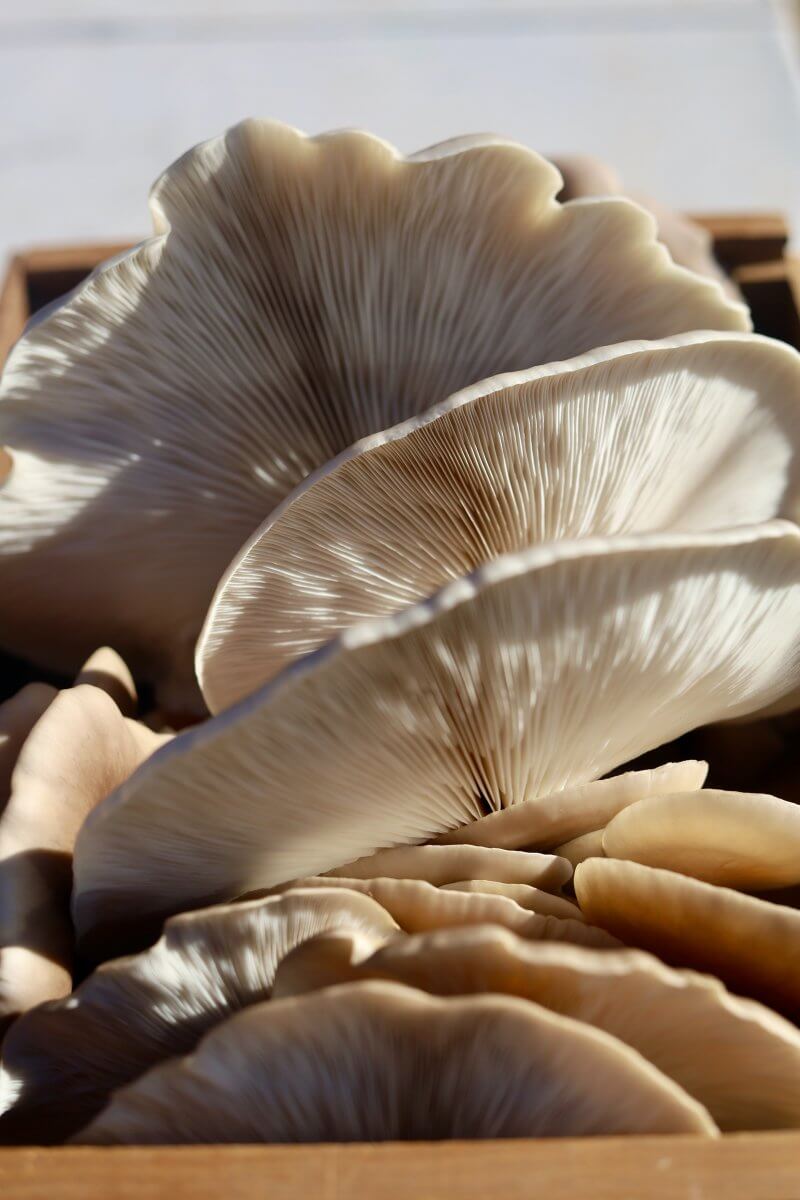
Button Mushrooms
Button mushrooms can be used as a substitute for shiitake mushrooms, but there are notable differences in flavor and texture that you should be aware of when making the substitution:
Flavor: Button mushrooms have a mild and subtle flavor compared to the more pronounced earthy and smoky flavor of shiitake mushrooms. If your recipe relies on the distinctive taste of shiitake mushrooms, using button mushrooms will result in a milder flavor profile.
Texture: Button mushrooms have a tender and slightly spongy texture, and they are not as meaty or chewy as shiitake mushrooms. Button mushrooms will not provide the depth of texture and chew that comes from oyster mushrroms.
Cooking: Button mushrooms are commonly used in a variety of dishes, including soups, stews, salads, and sautés. They cook relatively quickly and release moisture as they cook. Button mushrooms are alos very versatile and can work well in recipes where the specific texture and taste of shiitake mushrooms are not crucial.
When using button mushrooms as a shiitake mushroom substitute, consider the overall impact on the flavor and texture of your dish. If the distinct earthy and smoky flavors of shiitakes are central to your recipe, try using additional seasonings or consider mixing button mushrooms with other types of mushrooms to achieve a more complex flavor profile.
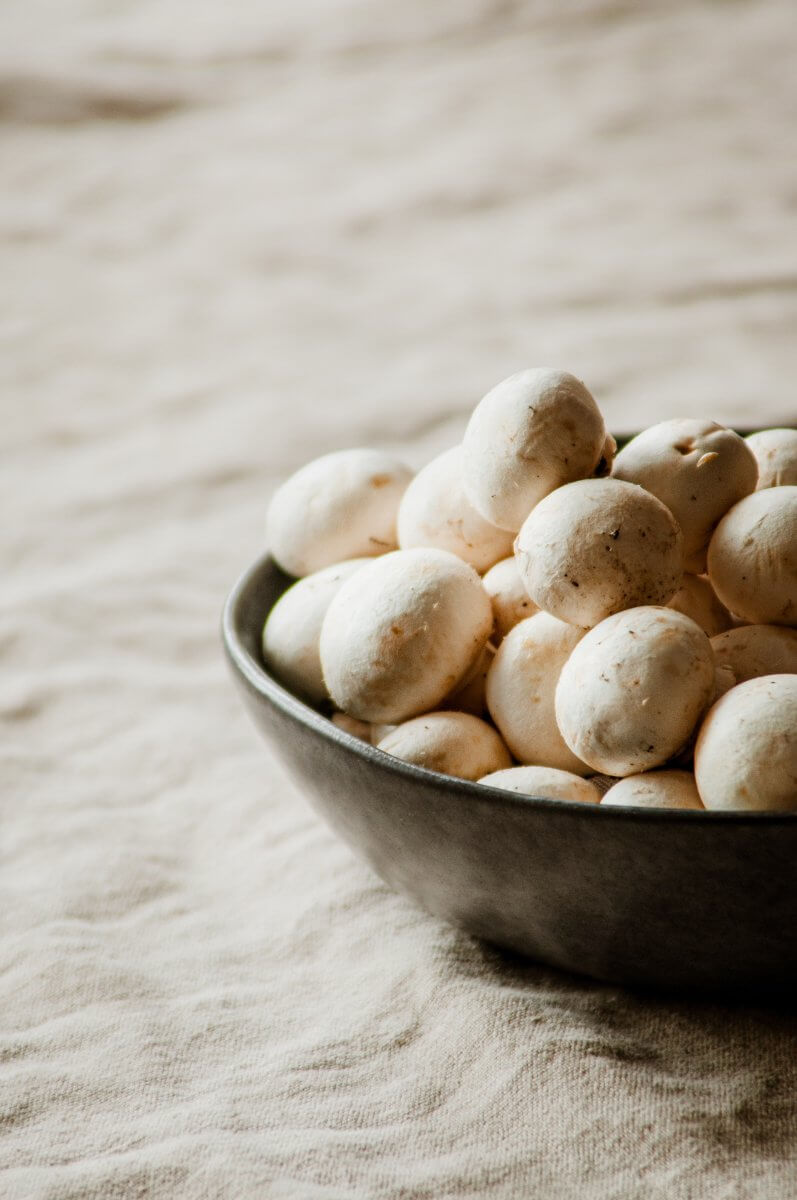
Maitake Mushrooms
Maitake mushrooms can serve as a viable substitute for shiitake mushrooms in many dishes, but there are a few differences to keep in mind:
Flavor: Maitake mushrooms have a rich and earthy flavor, similar to shiitakes. However, maitakes can also carry a slightly sweet undertone. While the flavors are somewhat comparable, the sweetness in maitakes might add a different flavor to your dish compared to the smokiness of shiitakes.
Texture: Maitake mushrooms have a unique frilly and layered appearance with a tender yet substantial texture. Shiitake mushrooms n the otherhand have a meatier texture with a bit more chewiness.
Cooking: Maitakes can be sautéed, roasted, stir-fried, or added to various recipes much like shiitakes. Due to the delicate nature of maitake clusters, you might need to be careful while cooking to maintain their shape.
When using maitake mushrooms as a shiitake mushroom substitute, consider the overall flavor profile and texture of your dish. Maitakes can add a unique character with their frilly appearance and slightly sweet flavor. If your recipe relies heavily on the specific smokiness or chewiness of shiitake mushrooms, you might want to adjust seasonings or explore combining maitakes with other mushroom varieties to achieve a more similar profile.
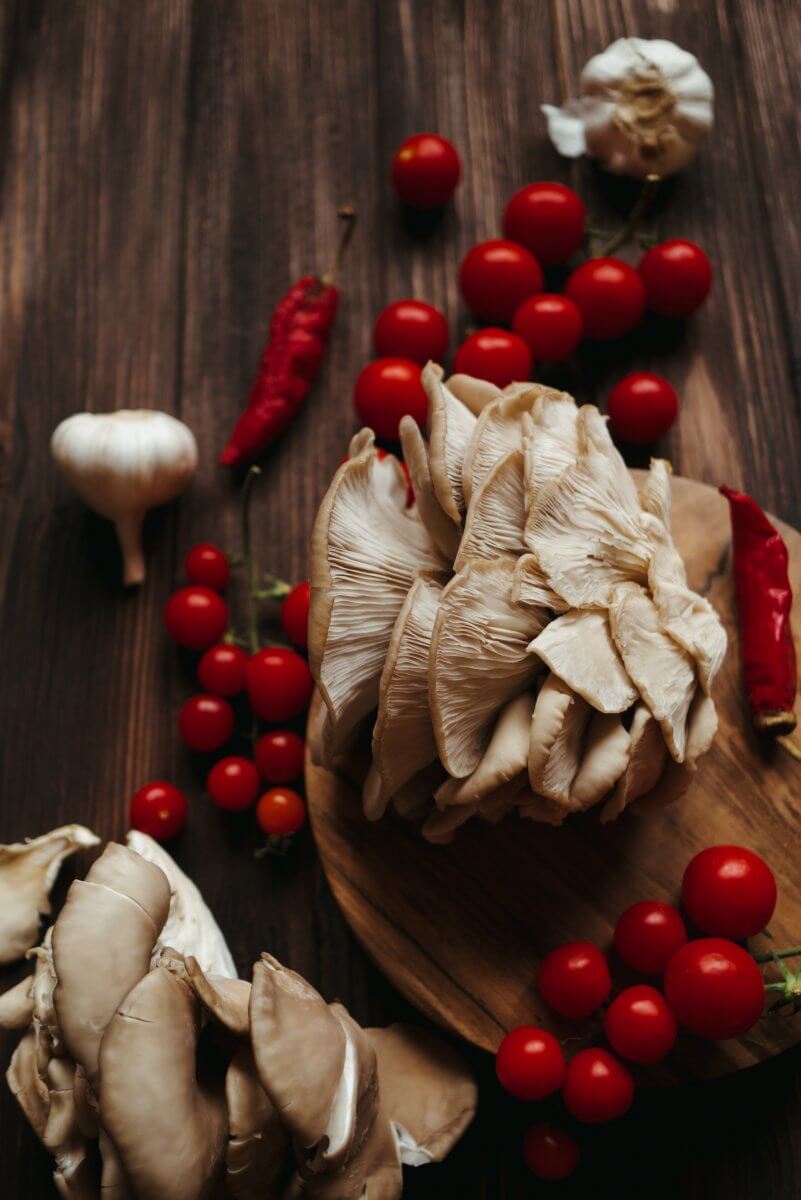
Chantrelle Mushroms
While chanterelle mushrooms have a distinct and delicious flavor of their own, they can be used as a substitute for shiitake mushrooms in certain dishes. However, there are some differences you should consider:
Flavor: Chanterelle mushrooms have a unique flavor that is often described as fruity, apricot-like, and slightly peppery. This flavor is quite different from the earthy and smoky taste of shiitake mushrooms. Substituting chanterelles for shiitakes might result in a dish with a more vibrant and fruity flavor profile.
Texture: Chanterelles have a delicate texture with a slightly chewy consistency. They are usually more tender than shiitake mushrooms, which have a meatier and chewier texture.
Cooking: Chanterelle mushrooms are often preferred in dishes where their distinct flavor can shine, such as in pasta, risottos, or simply sautéed with butter and herbs. They are not typically used in the same way as shiitakes in Asian or umami-focused dishes, so the suitability of the substitution depends on the specific recipe.
When using chantrelle mushrooms as a shiitake mushroom substitute, consider the unique fruity flavor and delicate texture of chanterelles. If the earthy and smoky attributes of shiitakes are crucial to the dish, using chanterelles might alter the overall flavor profile. However, if you fancy exploring a new and fruity dimension in your recipe, chanterelles can be a delightful alternative.
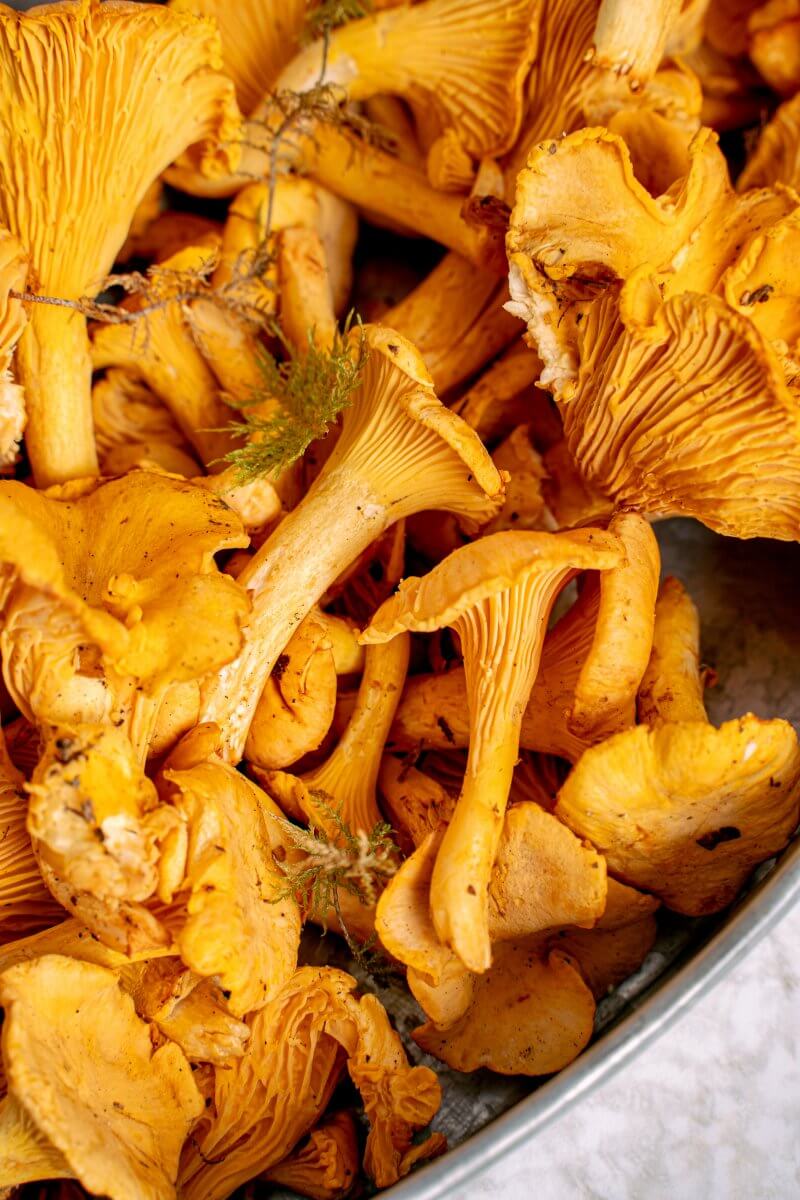
Porcini Mushrooms (Dried)
Dried porcini mushrooms can indeed be used as a substitute for shiitake mushrooms in certain recipes, but there are notable differences that you should consider:
Flavor: Dried porcini mushrooms have a strong and intense umami flavor, making them an excellent choice for adding depth to dishes. Unlike shiitake mushrooms which have a distinct earthy and smoky flavor that is different from the rich umami of dried porcini.
Texture: Dried porcini mushrooms, when rehydrated, have a slightly chewy texture with a robust bite. Shiitake mushrooms also have a meaty and chewy texture but it is different from the rehydrated porcini.
Cooking: Dried porcini mushrooms need to be rehydrated before use. The soaking liquid can also be used to enhance the flavor of your dish. Porcini mushrooms are often used to add a deep and savory flavor to soups, stews, risottos, and sauces.
Substitution Considerations: Dried porcini mushrooms can work well as a flavor enhancer and can add a rich umami component to your dish. However, if your recipe relies on the specific earthy or smoky notes of shiitake mushrooms, the substitution might result in a different flavor profile. You could always use a combination of dried porcini and other fresh mushrooms to achieve a balance between umami and texture.
When using dried porcini mushrooms as a shiitake mushrooms substitute, think about how the strong umami flavor of the porcini will impact the overall taste of your dish. While they won’t provide the same smoky notes of shiitakes, they can add complexity and depth to your recipes.
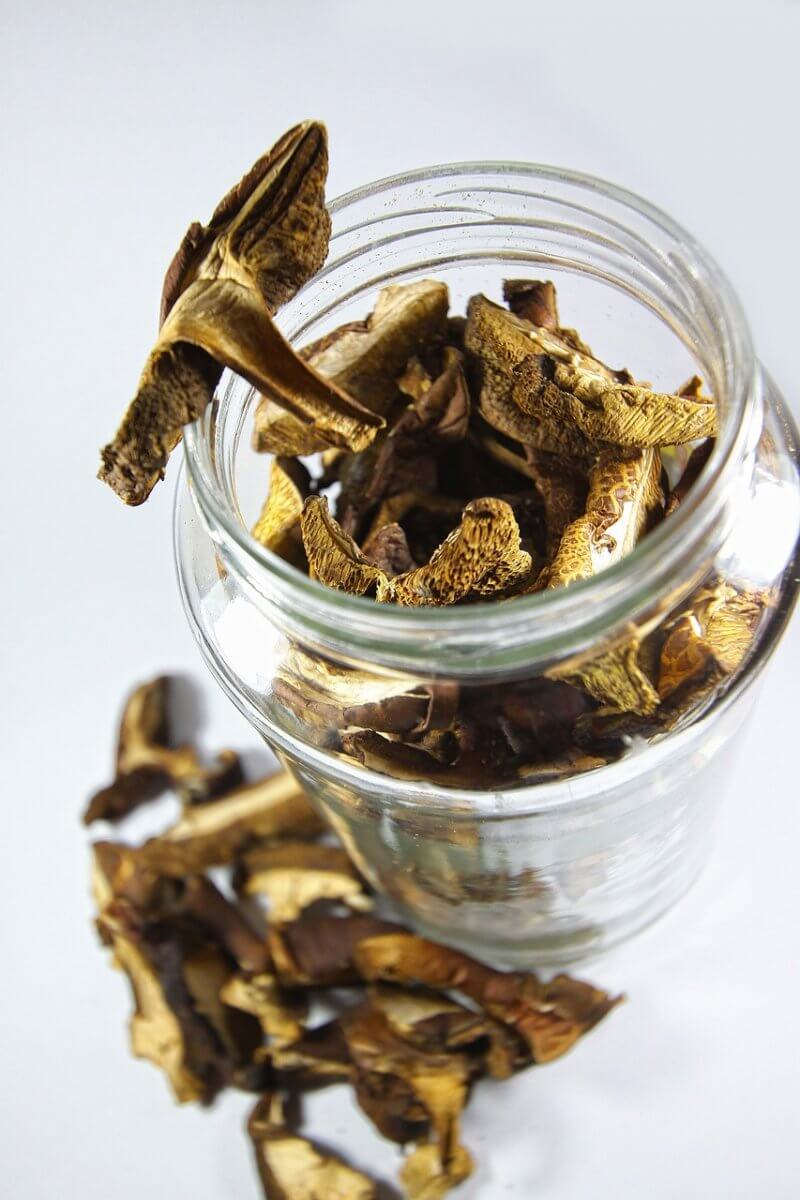
Enoki Mushrooms
Enoki mushrooms can be used as a substitute for shiitake mushrooms in certain dishes, but there are some important differences to consider:
Flavor: Enoki mushrooms have a delicate and mild flavor with slightly nutty and fruity undertones. This flavor is quite different from the earthy and smoky taste of shiitake mushrooms. This means substituting enoki mushrooms for shiitakes might result in a dish with a lighter and more subtle flavor profile.
Texture: Enoki mushrooms have an extremely delicate and slim texture, often described as “noodle-like.” They have thin stems and tiny caps, which provide a unique crunch when eaten. This is totally different from shiitake mushrooms which have have a meatier and more substantial texture.
Cooking: Enoki mushrooms are typically used in Asian dishes such as soups, stir-fries, and hot pots, where their delicate texture and flavor can complement the overall dish. They are not suitable for all types of recipes, especially those that require a robust mushroom presence or a specific earthy taste.
When using enoki mushrooms as a shiitake mushroom substitute, keep in mind their subtle flavor, delicate texture, and specific culinary uses. Enoki mushrooms might not be the best option for recipes that heavily rely on the pronounced flavors and meaty texture of shiitakes, but they can bring a unique texture and mild flavor to certain Asian-inspired dishes.
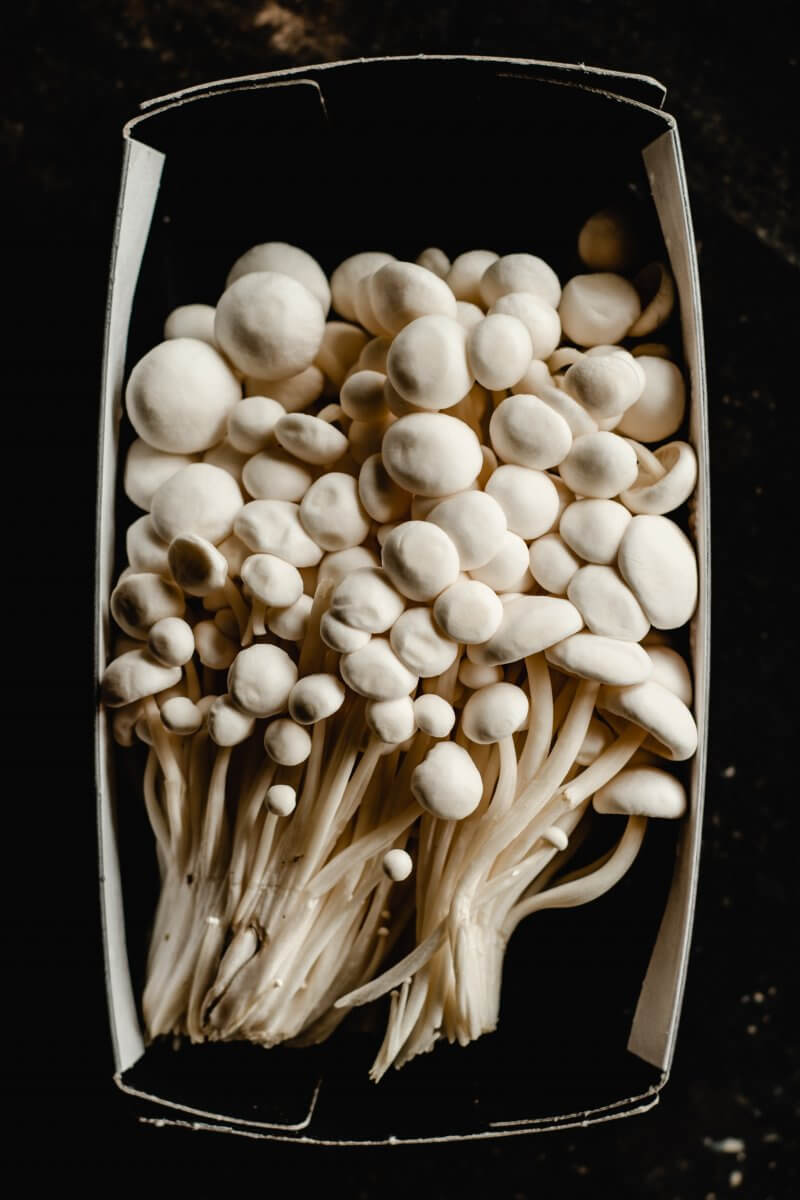
Cremini Mushrooms
Cremini mushrooms (also known as Chestnut mushrooms) can be a suitable substitute for shiitake mushrooms in many dishes. But there are some differences to be aware of:
Flavor: Cremini mushrooms have a mild and slightly earthy flavor. While they are flavorful, they don’t have the same level of smokiness or intensity as shiitake mushrooms. Substituting cremini mushrooms for shiitakes might result in a dish with a milder overall flavor profile.
Texture: Cremini mushrooms have a dense and meaty texture, but they are generally not as chewy as shiitake mushrooms. Shiitake mushrooms have a more substantial chewiness that some dishes might require.
Cooking: Cremini mushrooms are versatile and can be used in a variety of dishes, including sautés, soups, stews, and pasta dishes. They might not add the same depth of flavor that shiitake mushrooms do, but they can work well as a general mushroom ingredient.
When using cremini mushrooms as a shiitake mushroom substitute, consider the milder flavor and denser texture of creminis. They can be a good option when the specific smokiness or chewiness of shiitake mushrooms isn’t crucial to the dish. If the smoky flavor is an important part of the dish, you might want to enhance the creminis with additional seasonings to achieve a more similar flavor profile.
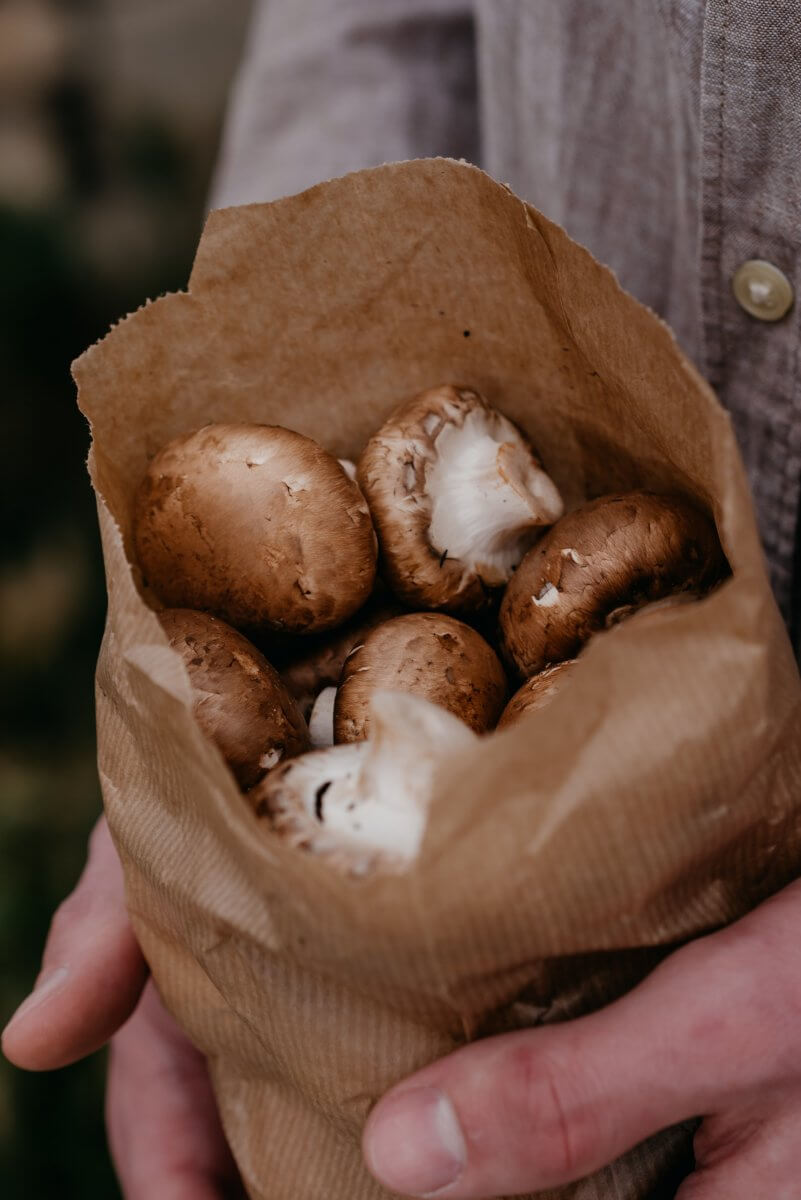
Summary for Shiitake Mushroom substitutes
Okay – that’s you all sorted with a suitable substitute for shiitake mushrooms.
To conclude, here’s a summary of the information we discussed regarding shittake mushroom substitutes:
- Cremini (Chestnut) Mushrooms: Mild flavor and meaty texture.
- Portobello Mushrooms: Meaty and robust texture, suitable for grilling or stuffing.
- Oyster Mushrooms: Delicate with a slightly sweet flavor, great for stir-fries and salads.
- Maitake Mushrooms: Earthy and rich flavor with a unique frilly texture.
- Button Mushrooms: Mild flavor and tender texture, versatile for various dishes.
- Enoki Mushrooms: Delicate and noodle-like texture, best for Asian-inspired dishes.
- Porcini Mushrooms (Dried): Rehydrate before use. Can add a rich umami element to dishes.
- Chanterelle Mushrooms: Fruity and apricot-like flavor, can add a unique twist to recipes.
- Key Points:
- Consider the flavor, texture, and cooking characteristics of the substitute mushrooms.
- Some substitutes might alter the overall taste and profile of the dish.
- Mixing different mushroom types can create unique flavors and textures.
- Adjust seasonings and cooking times as needed for the chosen substitute.
Remember that while these substitutes can work in various recipes, they might not replicate the exact characteristics of shiitake mushrooms. The choice of substitute depends on the specific flavors and textures you want to achieve in your dish. Feel free to experiment and adapt based on your preferences and the ingredients available to you.
We have gathered together a lot more facts on ingredients such as herbs, spices, oils, nuts, etc. if you would like to learn some more.
